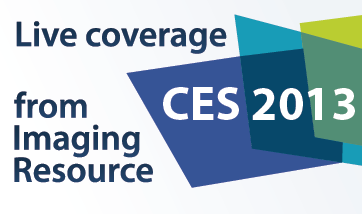Q&A with Panasonic’s Darin Pepple: The importance of connectivity and video in today’s compact digital cameras
posted Monday, January 14, 2013 at 3:34 PM EST

At the 2013 International Consumer Electronics Show (CES), Imaging Resource publisher Dave Etchells, managing editor Roger Slavens and director of development Arthur Etchells sat down with Darin Pepple, senior marketing manager at Panasonic to discuss mirrorless camera technology, the success of the GH2 and GH3 among pro still and video photographers, and the importance of camera connectivity.
Dave Etchells/Imaging Resource: We see a lot going on with connectivity in digital camera development. How do you see Panasonic positioning itself over the long term with respect to smartphones and wide-area connectivity?
Darin Pepple/Panasonic: Well, in the U.S. at least, we're not selling cellphone hardware. But we are starting now to integrate with Android and Apple iOS phones and tablets. So what you'll see more and more is the integration of the camera with a mobile device so that you can take the benefits of the cellular network to make the camera even more mobile.
Now there are some limitations with the cellphone versus what some cameras bring to the table. For example, the durability of a waterproof camera. You can only drop your cellphone once, or drop it in the pool once, right? But with a tough camera, for example like our TS series, you don't have to worry about that. Or the flexibility of a zoom, because as we all know cellphones just don't do zooming very well yet.
So integrating with the Wi-Fi capability and then further taking it into cellular allows us to communicate with the other networks such as social streams. And I think that's what people want to do more. They want to "unwire", and they want to share whatever they've done with the camera. They want to be more creative and share it, so this gives them that opportunity.
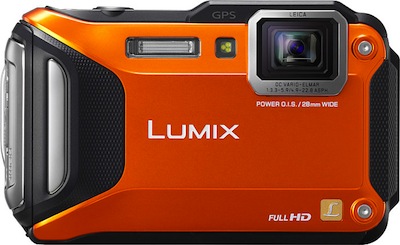
DE: Do you think it's a possibility that you could just take pictures with the camera, and then they automatically migrate to the phone?
DP: Yes, I think so. The cellphone has really become more a computer that's very portable, in a lot of ways. So with applications that are being developed for Android or Apple, that becomes much, much easier -- especially with Near-Field Communication (NFC). By bringing the two devices within very close proximity, you can create a handshake between the two, and establish a Wi-Fi connection without really much difficulty.
DE: You've announced NFC capabilities in a number of your new compact digital camera models to facilitate connection with smart devices. On the user interface, what does that look like?
DP: Well, if you've ever set up a Wi-Fi connection between two devices, you know how frustrating it can be at times. It's a lot easier now, for example with Bluetooth technology, to make a connection between two devices. But with Wi-Fi, it's historically been more complicated. So with NFC, you bring two devices -- your camera and a smartphone or tablet -- together in close proximity. You may have see people bumping two devices together to establish a connection and share information via Wi-Fi very easily, securely and quickly. NFC is going to make the use of Wi-Fi technology much, much easier for the consumer to share their photos from their cameras.
DE: So basically it takes all of the setup, configuration and security out of the equation. The security is that the two devices have to be within four inches of each other and then once you do that, they just wake up and see each other. But that's not necessarily the way you'll transfer the information. That's just for setup, and then it switches to Wi-Fi so you'll have more range.
DP: Right. Then you would start to utilize the apps that you download into the phone to control the camera, for example, as a shutter remote. Or you can use the phone or tablet as the camera's viewfinder. Likewise you can share your images with a friend's smart device or social networks immediately.
DE: For NFC to work, obviously both devices have to have the capability built in. How widespread is NFC in smart devices currently? I know for instance Apple decided not to put NFC into the iPhone 5. So how that does affect your planning for that?
DP: Unfortunately with an Apple device, it is more of a manual process to set it up. With an Android device it's much faster, especially if NFC is available. I think it's just a matter of time before it becomes a standard component of Wi-Fi for many handheld devices, whether it's your phone, or even a calculator. It's just going to become one of those things.
DE: So it's a small percentage of the population of devices out there now, but you expect NFC is going to be ubiquitous at some point.
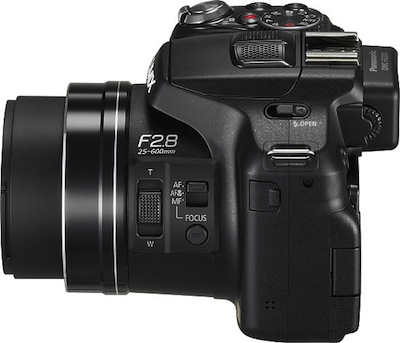
DP: Yes. Within the mobile carriers, I think it's going to be a growth opportunity for them to highlight new hardware.
DE: Going back to the competition against smartphones, you alluded to the fact that cameras can zoom much better and even have long-zoom lenses. So like many manufacturers, it appears Panasonic has been focusing more on long zooms. How is that strategy working for you? Are you seeing volume growth in that market segment, or at least less of a decline compared to other point-and-shoots?
DP: Within the point-and-shoot sphere of cameras, the long-zoom and the tough cameras are really the only ones experiencing growth. Everything else is shrinking. The long zooms are the camera of choice for most who travel, and the tough cameras are for those with active, adventurous lifestyles -- or even those who have kids who are prone to dropping devices or accidentally knocking them off the counter.
DE: The tough camera can survive even the wilds of the kitchen.
DP: (laughing) Yes.
DE: You've had a lot of success in penetrating the pro video market with the Panasonic GH2, and the GH3 looks to capitalize on that. How big is the pro video market for you relative to the total sales of G-series models? Any sense of what the percentages are?
DP: Frankly, it's a little hard for us to say for sure. We do know that the popularity of the GH2 among video shooters is extremely high. And much of the buzz on the GH3 has been because of its professional video capabilities. It's perfect for indie filmmakers, and for use as a B-roll camera on bigger productions. That said, we're seeing a lot of professional photographers who are in the wedding and event fields making the transition to video. In fact, in an upcoming trade event, you will see us present several photographers who are showcasing their ideas on how a traditional photographer can make use of video as part of their workflow.
In the video world, the GH2 and GH3 are almost point-and-shoot simple. And it makes it very easy for pro photographer to do it without much fear. Most of them know how to set up a scene and how to light. So it's just a matter of them learning how to put a storyline together and do some video editing. The frontier for Panasonic is to make video editing a component of what we do as a business.
DE: So it's no longer just pro videographers who are doing this, but still photographers who are extending their capabilities.
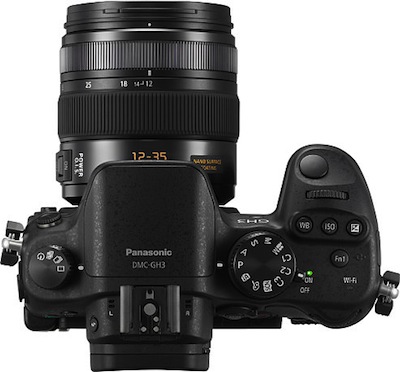
DP: A lot of clients now expect pro still photographers to understand and shoot video. And let's face it, if you've used a DSLR to shoot video, there is no auto focus. There is no quiet zooming. A lot of the lenses are still designed for traditional focusing mechanisms, so they're loud, too. That requires you to set up secondary audio. Now you're getting into this realm of a very manual process. But with mirrorless technology such as in the GH2 and now GH3, where everything's automated, the focusing is fast and quiet and immediate. They use full-area tracking that follow your subjects around.
DE: I was going to ask next what Panasonic's strategy was for competing in against the likes of Canon and Nikon, but it sounds like the basic technology you're employing has some significant advantages.
DP: It does. When you utilize a traditional DSLR, for the most part, you're given one or two focus points that are locked. If your subject moves off of that -- say a traditional shot of a wedding with the bride coming down the aisle. She's moving, she's getting closer and closer and closer to you. You need that to stay in focus, but what if she steps to the left or to the right off of that focus point? You lose it. It focuses on the back of the church and you hear the loud clicking of the lens as it's doing it.
It makes for a very difficult environment unless you really know what you're doing. Take for example, a small motion picture where an indie film shooter is doing everything manually. That's not something a pro still photographer is going to want to take the time to do. They're going to want a little more automation.
DE: In professional videography or film, they have a person standing there who's just the focus puller. That's the whole job, just to adjust the focus.
DP: And with the GH2 or GH3, you've got an LCD that's touch control. You touch and you say, "Follow this person." It tracks, it focuses and stays in sharp focus the entire time.
DE: One thing that's really unusual with the GH2 was the extent to which people "hacked" the camera to extend its capabilities. In fact, a lot of what's showing up as features now -- official features in the GH3 -- started out from hacks of the GH2. Is that something that Panasonic might support more directly or more openly in the future as a way of encouraging innovation around your products?
DP: You know, I have to say with the GH2 and a lot of the hacks that you saw coming into it, they did inspire us to do more. The dilemma is that once you start adding these software fixes to a camera, you immediately create an environment that's outside the operational limits of the hardware itself. So you might burn up a chip sooner. You might ruin some component of the camera, not fully realizing it. Maybe that's fine with you. Maybe you've got $800 to trash. But not everybody does.
For us to openly embrace it would require a very different cultural change for us as a company, because we want to create the environment where you don't have to worry about these things. We'll produce the product and it gets you the file and the end product quickly. Whereas a lot of the hacking that goes on, it's a lot of tuning and tweaking and playing with it. Not everybody has the time to mess with that. So what you find is that those that are hacking it really know what they're doing, and those that do add the hack that don't know what they're doing quickly find themselves in hot water as they've exceeded some of the capabilities of the hardware itself.
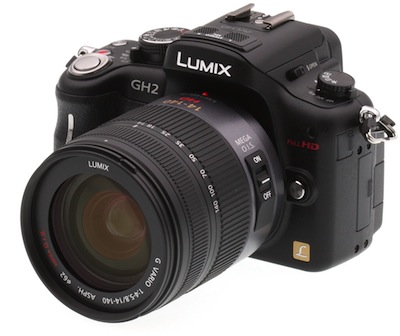
DE: In the Micro Four Thirds market, Panasonic's developed a name for really great glass. You've got a fabulous lens line up. To what extent do you see owners of other makers' Micro Four Thirds cameras buying Panasonic lenses to use on them?
DP: There's a lot going on with some of our glass right now. Some people are discovering just what a small compact lens can really do because of the optics that we built into it, and our relationship with Leica. We've learned a lot. They've learned a lot from us and we've jointly built this optical category into an amazing line up.
DE: I see Panasonic is really focused on contrast detect, and we've seen other manufacturers integrate phase-detect autofocus. Is that going to be a potential area of innovation for Panasonic? Where do you see the market going?
DP: Honestly, I see more of the market now moving towards contrast-based. Phase-detect autofocus is fast, but it's fast because it uses several pieces of hardware. Now that in itself adds an inherent amount of calibration.
Several pieces of hardware all have to talk to each other and all have to be calibrated. And in a professional high-end camera, a lot of times, we buy special pieces of hardware and software to calibrate each lens so that you have that fine tuning within the firmware. With a contrast-based system, you don't need that. What the sensor sees is what it's going to be. It's going to be about 90% accurate. Whereas phase detect is going to be about 60% accurate. So for every 10 shots you take, six are going to be good. With a contrast system, 90% of those are going to be good. So I think you're going to see us continue to move in that direction.
DE: That's an issue when you have a traditional mirror-based system, where you've got a whole separate autofocus sensor. Now people are integrating phase-detect onto the sensor surface itself, so you don't have to worry about back-focus or front-focus.
DP: When you do it that way, it's really more of just a software trick. So you break the sensor up into two pieces, left and right basically, and you create that simulation, where if you just go with the regular contrast pieces, you've got the 90% accuracy. And the fact that now sensors output such amazingly fast refresh rates and your processors are fast enough now to finally handle that. Another advantage is that as contrast-detect systems see subjects moving around in a scene, they can prove to be more predictive.
The phase-detect system, on the other hand, is not as predictive because it's based on lightness and darkness of things within different sensor groups, not as an image as a whole. So I think what you'll see is this will be adopted more and more going forward.
DE: So even though you eliminate the potential error of the separate AF sensor being calibrated in its position with the phase-detect elements on the sensor chip, you still have a disadvantage in accuracy relevant to contrast detect.
DP: You can, yes.
DE: And of course, you have the aperture limitations too: Contrast detect can focus at f/22 whereas phase detect needs a wide aperture.
In another direction, there's been a lot of activity lately around bigger sensors in smaller cameras, and affordable full-frame cameras even. Does that have an impact on your plans? Do you think there's a chance of a platform beyond Micro Four Thirds that moves back in the direction of a larger sensor again?
DP: Well, if you look at the heritage of where Lumix has been, we started out with a full-sized, full bodied Four Thirds camera. And the logic behind that was that we can produce a smaller camera over time, and we could make best use of video in the future with the sensor technology by removing the mirrors.
That's when Micro Four Thirds came out. So with the move from Four Thirds to Micro Four Thirds, we entered into the possibility of video, better contrast focusing technologies and just a whole myriad of more intelligent systems. For us to then go back upstream and say, "Well now we need a bigger sensor" when we've poured so much R&D into making the Micro Four Thirds sensor so good, and you can see that in the GH3, I don't think we're going to do that.
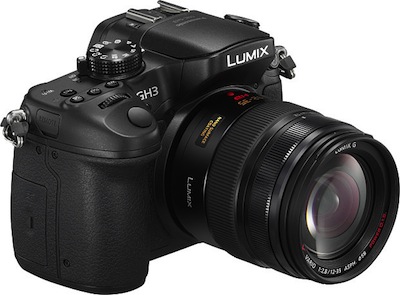
I called pro photographer Ira Block and told him that I wanted him to test the prototype in the desert, shooting in extreme environments. I sent him out with basically the alpha version, a hand-built version of the GH3. And he came back and he said he was really impressed with it. I wanted him to get the feeling that a Micro Four Thirds system can be every bit as good as an APS-C or full-frame system. And Ira told me that he felt it was ready for professional use, that with the GH3, Micro Four Thirds has come of age. It shows in the pictures he's taken.
DE: Mirrorless and Micro Four Thirds were really slow to catch on in the West, but finally seem to be gaining traction. What's the U.S. growth curve for mirrorless look like from where you're sitting?
DP: With the economy the way it is, it's hard to develop a full growth curve, but the potential is there. Let's just put it that way. I think as U.S. consumers start to realize there's more and more mirrorless cameras coming out on the market, start to realize that they can have a small camera, a smaller lens system, and that they can pack it in a smaller, lighter bag, that mirrorless will become mainstream. As for our brand, we see huge potential to grow in the U.S. But first, the consumer has to become a little more comfortable with the idea of dropping the old DSLR and moving onto mirrorless technology.
DE: That might speak to the next question a little bit too: What have you learned about marketing Micro Four Thirds to the U.S. audience? And how specifically has that changed both your marketing and product planning?
DP: Originally we focused very intently on it being mirrorless. We wanted to utilize terms like 'mirrorless' and 'compact system camera.' But in the end, the average consumer didn't really care. They saw an interchangeable lens camera. And an interchangeable lens camera in the consumer's mind meant it must be better. And you see that today with the DSLR. Most consumers still buy mostly DSLRs, but you're starting to see the shift over to the mirrorless body systems as they begin to understand their advantages. And we've learned to communicate these advantages better, and stack our mirrorless cameras against DSLRs. Our motto now is "Changing photography." We feel we are doing that as a brand. We are changing the face of photography and how it works and how we relate to a camera.
DE: Back to the other side of the potential mirrorless market. What about pros that are shooting sports? Is there a direction that you could go there?
DP: I think with video, we are there. So if we want to shoot sports video, we can do it better than any DSLR camera in the market. If you want to shoot sports still-wise, I think the DSLR still has some edge on it. I'm talking the really high-end stuff. We can make some further improvements in track focusing of fast-moving objects. Some of our optics, we don't have the really super-long lenses that much of the sports world wants. For example, a 300mm f/2.8 or even a 600mm f/2.8 would be a great thing to have. We don't have that yet. So, at f/2.8 we go to up to about 100mm and that's the limit for us. We've got some development to do in the optics to make the sports photographers interested.
I think we're there with photojournalism, too, however. I think photojournalists want to be able to immediately take stills and videos, and switch back and forth constantly.
DE: Well, that's the end of our time. Thanks so much for talking with us.
DP: Thank you.
DE: Pleasure as always. Thanks for the great answers and I'm sure we'll be seeing more of you this year as you roll out more products. The engineers aren't done.
DP: No, they never stop.
